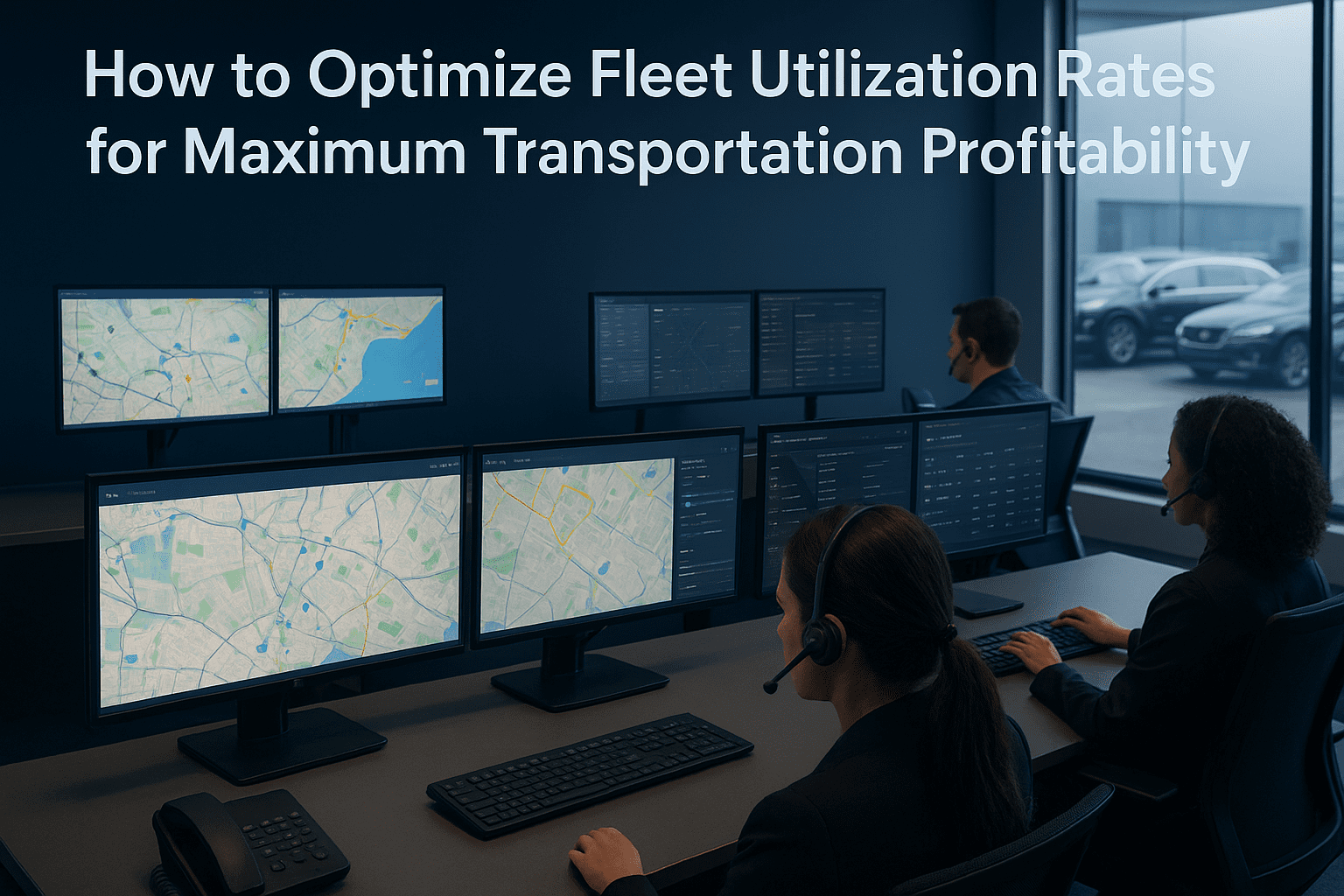How to Optimize Fleet Utilization Rates for Maximum Transportation Profitability
The Hidden Costs of Poor Fleet Utilization
Before exploring solutions, we must first understand the true financial impact of underutilized vehicles. Each idle hour represents lost revenue potential while fixed costs continue accumulating. Depreciation, insurance, licensing, and storage expenses don’t pause when your vehicles aren’t generating income.
Consider this breakdown for a typical luxury sedan in your fleet:
- Fixed monthly costs: $1,200 (loan payment, insurance, licensing)
- Daily fixed cost: $40 (based on 30-day month)
- Hourly fixed cost: $1.67 (based on 24-hour operation)
- Potential revenue per hour: $45-85 (depending on service type)
Every hour your vehicle sits idle costs you both the lost revenue opportunity and the ongoing fixed expenses. A vehicle operating at 45% utilization effectively loses money compared to one running at 75% utilization, even with identical per-trip pricing.
Strategic Framework to Optimize Fleet Utilization Rates
Improving fleet utilization requires a systematic approach across multiple business functions. Successful companies implement coordinated strategies rather than isolated tactics. The most effective framework addresses dispatch operations, pricing strategies, customer segmentation, and technology integration simultaneously.
Advanced Dispatch Optimization Techniques
Your dispatch team represents the nerve center of fleet utilization. Traditional first-in-first-out dispatching often leads to inefficient routing and missed consolidation opportunities. Modern dispatch strategies focus on geographic clustering and time-based optimization.
Implement these dispatch improvements to immediately boost utilization:
- Geographic clustering: Group nearby pickups within tight time windows, even when requests arrive at different times
- Back-to-back scheduling: Intentionally schedule arrivals and departures with minimal buffer time between assignments
- Cross-utilization: Deploy the same vehicle for different service types throughout the day (airport transfers in morning, corporate shuttles midday, evening event transportation)
- Dynamic reassignment: Use real-time tracking to reassign the closest available vehicle rather than predetermined assignments
Intelligent Pricing and Demand Management
Strategic pricing represents one of the most powerful yet underutilized tools to optimize fleet utilization rates. Traditional fixed pricing fails to account for demand fluctuations throughout days, weeks, and seasons. Implementing dynamic pricing aligned with demand patterns smooths utilization valleys and maximizes peak periods.
Consider these pricing strategies:
- Off-peak discounts: Offer 15-20% discounts for travel during traditionally slow periods
- Advanced booking incentives: Provide better rates for reservations made 7+ days in advance to improve planning
- Minimum duration requirements: During high-demand periods, implement minimum booking times to reduce deadhead miles
- Surge pricing: Temporarily increase rates during exceptional demand periods (holidays, major events, severe weather)
Conclusion: The Path to Sustainable Growth
Optimizing fleet utilization represents the most powerful lever for improving transportation company profitability. Unlike raising prices or cutting costs, better utilization improves both your top and bottom lines simultaneously. The strategies outlined here provide a comprehensive framework to systematically optimize fleet utilization rates through dispatch improvements, strategic pricing, operational efficiency, and targeted marketing.
Remember that successful utilization optimization requires balance. Pushing utilization beyond sustainable levels leads to vehicle wear, driver burnout, and service quality declines. The goal isn’t 100% utilization—it’s finding the optimal point where your fleet generates maximum revenue while maintaining the reliability and quality that builds long-term customer loyalty.
Begin today by analyzing your current utilization patterns and identifying your single biggest opportunity. Whether it’s implementing dynamic pricing for slow periods, improving dispatch efficiency, or developing new service offerings for utilization gaps, taking that first step puts you on the path to dramatically improved profitability and sustainable business growth.
Ready to transform your fleet operations? Contact our dispatch experts to discuss how our solutions can help you optimize your fleet utilization and boost profitability.
Industry Resources and Further Reading
For additional insights on fleet management and transportation industry best practices, explore these authoritative resources:
- National Limousine Association – Industry advocacy and best practices
- Transport Topics – Transportation industry news and analysis
- Fleet Owner Magazine – Commercial fleet management insights
- Dispatch Daily Blog – Daily insights for transportation dispatchers
- Dispatch Operations FAQ – Answers to common dispatch questions




Leave a Reply